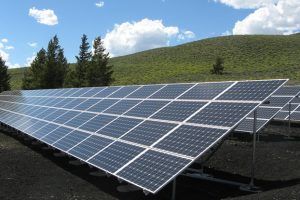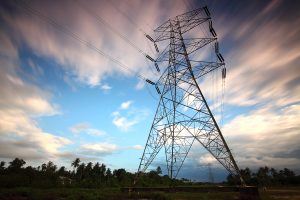ABOUT US
Beacon Energy LLC has created, evaluated and assisted in the development of innovative wind, solar, transmission, gas-fired power and energy storage assets and solutions for all types of clients on both the buy and sell side. Our expertise is in siting, power purchase negotiations, energy management, natural gas procurement and strategy, EPC, permitting, acquisition and divestitures, financing, and all forms of contract negotiations. We create new business opportunities by rigorous market analysis, the use of proprietary models and techniques and best practice strategic planning with the goal of maximizing value and minimizing risks. Beacon focuses on lower customer costs, increased margins for truly competitive ventures, and advancing R&D concepts that benefit from disruptive industry changes.
We have played a key role in purchases of cost-effective energy supplies for commercial/industrials, communities and other sophisticated purchasers. Beacon has analyzing loads, time of day use, the costs of service interruptions, demand costs, costs of different supply options including basis risks, and evaluated other risk elements for purchasers. Beacon Energy LLC has helped determine the most competitive energy supplies through bid auctions and bid evaluations and assisted in the implementation of the best approach.
The principals of our firm have worked on more than 10,000 MW of power asset development, more than 4 TcF of gas supply, and have served as lender’s expert or developer’s counsel to more than $4 billion in project financings. During the past seven years, they have played an important role in advancing over $1 billion of new wind, solar, battery storage, and other energy asset projects.
FREQUENTLY ASKED QUESTIONS
- Design business strategies and market analysis to capture value
- Perform due diligence on assets to give visibility to risks and design risk mitigation approaches,
- Implement key development steps—siting, offtake negotiations, etc.
- Help create new solar, wind, storage, combined heat and power (“CHP”)/gas-fired assets and Microgrids
- All phases of energy asset development
- Lower energy costs for end use customers while helping to manage risks within their envelope
- M&A and transaction negotiations/support
- Use of proprietary tools and techniques to develop competitive advantage
- By determined, tireless effort and rigorous analysis to create solid assets and positions
- Applying substantial experience to solve problems and create solutions/wins for all parties
- Familiarity with energy contracting risks and the ability to design a purchasing strategy to lower costs for customers
Key Industry Challenges
Today, many end use customers seek low cost, reliable and secure electric energy beneficial for the environment. A tall order to achieve with sometimes conflicting goals and priorities. These customers, in previously unmatched ways, are passionate about green energy, carbon reduction, technological improvements and the lower costs of distributed solar, battery storage and combined heat and power (“CHP”). Driven by global competition and the desire for US jobs and profits, the electric and gas industries are set to modernize the grid and realize opportunities for distributed energy resources (“DER”) and improve their service offerings. Utility scale solar, wind, and combined cycle gas plants compete with scale against DERs to offer the lowest cost of energy (“LCOE”) for customers.
Similarly, microgrids are growing in importance and offer secure, reliable, low cost power to communities, military installations, college campuses, hospital campuses, hospitality firms, data installations, the the process industry and other users. These customers require and benefit from a reliable, low cost and resilient energy system. These microgrids offer the opportunity to offer economic energy and capacity to the grid during times of excess generation, help with blackstart capabilities when other units go down together and use batteries as more than backup systems to capture the full range of value added benefits avoiding transmission and distribution (“T&D) costs, alternative ancillary service charges, capacity costs and in some cases realize energy arbitrage benefits for their owners.
Buying energy supply in today’s environment of declining costs and loads involves risk assessment, market analysis, technology assessment, and an analysis of the purchaser’s situation and objectives. It requires constant vigilance to obtain the lowest long term costs that offer supply security.
Various trends in the electric utility industry are shaping its future:
- Lower cost solar and storage have the potential to disrupt traditional sources of supply for customers.
- Utility scale solar and wind offer utilities real alternatives to new central station plants. Natural gas fired CCGT are still very competitive.
- The electric industry is confronted with declining load growth and multiple forms of new distributed energy resources (“DER”) with innovative energy storage and battery approaches.
- Customers are demanding lower costs and more flexibility of options. They seek reliable low cost power and are exercising their purchasing power to get what they want.
- Spurred on by declining costs for solar and wind under the current Investment Tax Credit (“ITC”)/Production Tax Credit (“PTC”) incentives has created customer expectations that substantial savings can be achieved.
- Low cost natural gas prices have helped customers achieve real savings and low costs of energy. They put more pressure on renewable assets to perform.
- Technological changes and new materials have led to improvements in solar efficiencies and trade-offs between older PV and newer PV costs versus performance.
- Competitive pressures and differing world demand levels for solar panels have led to major cost declines. However, trade tariffs decisions could be a black swan event for some offtake agreements based on prices that are difficult to realize.
- Demand response systems are offering non-supply alternatives to building new central station units to meet peak power requirements. Energy efficiency programs, building management systems (“BMS”) and new energy management systems (“EMS”) are offering a way to control resources and loads to better match supply and demand and lower costs for customers.
- Quantum computing, faster processing, new sensors, big data, machine learning and visibility into the distribution and transmission level grid offers the potential to design, model, control, and truly modernized the grid. A transformed grid could be capable of self-healing and less vulnerable to cyber-attack or physical interruptions.
- Utilities continue to seek a regulated rate of return and the proper incentives to balance the risks that they take and the investments required to offer best in class services. This has become increasingly more difficult with DERs, customer pressure for lower costs and technological trends that alter the traditional relationship utilities have had with customers.
- All sectors are seeing more competition. And while competition is healthy, it can erode margins and push firms out of business or slow down needed changes that benefit all.
Beacon Energy LL works to understand the underlying issues, rigorously analyze the choices and design solutions that are solid, simple to understand and sound. Our goal is to help advance and implement assets and approaches to problems that withstand the test of time and offers lasting value to all stakeholders.






